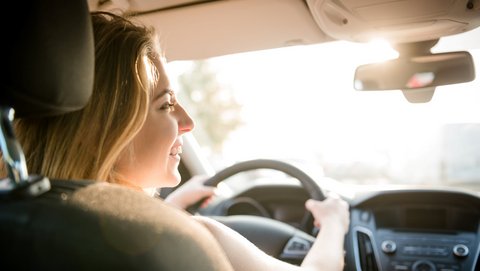MPE
Medical-psychological examination
The withdrawal of a driver's license is often, but not always, accompanied by a medical-psychological examination. It is ordered as soon as a driver has made a fundamental mistake. This includes, for example, driving under the influence of alcohol or drugs. The aim of the MPE is to change the driver's attitude and behaviour.
Reasons for an MPE are among others
- 8 points in Flensburg
- Driving under the influence of alcohol (from 0.3 per mille)
- driving while under the influence of drugs or medications
- Criminal offence committed in road traffic
- The participants of an MPE are not all necessarily traffic offenders. It can happen that an MPE is also ordered for mental or physical deficiencies. The purpose of the medical examination is to determine whether the person is fit to drive.

Where can you make an MPE?
After you have been invited to participate in an MPE, you should choose an officially recognised assessment body for driving suitability and inform the driving licence office accordingly. These include, for example, Dekra, TÜV Nord and TÜV Süd.
However, these assessment bodies not only offer MPUs, but also free advice and preparation courses. Please inform yourself about possible service offers at your desired assessment centre.
More ways to prepare for an MPE can be found at fahrverbot.com.
How does an MPE work?
A medical-psychological examination consists of four parts:
1. Questionnaire
Among other things, personal data, curriculum vitae, previous illnesses and the cause of the MPE (e.g. criminal offence) are requested.
Duration: approx. 30 minutes
2. Medical examination
At the beginning you will have a "doctor's talk" with a traffic physician. It'll be about your physical condition and medical history. A physical examination is then carried out. If you lost your driver's license because of alcohol or drugs, your liver values will probably be checked. Blood, urine or hair samples can also be taken.
Duration: approx. 30 - 60 minutes
3. MPE reaction test
This test tests your concentration and perception skills. On the PC you have to work on different tasks under supervision, which should give information about your orientation ability and reaction speed.
The aim is to find out whether you are physically fit to drive a motor vehicle.
Duration: approx. 30 - 60 minutes
4. Traffic psychology report
As an introduction, the reasons for the traffic conspicuity are first discussed. Critical questions (depending on your violation) will then be asked about your driving behaviour. These questions can ask you about your knowledge as well as your attitudes and behaviour. The reviewer will immediately inform you of the preliminary result. The final result is usually only available after two weeks.
Duration approx. 60 minutes
Outcome
There are three possibilities that can stand in your score.
1. positive result
You've passed and you'll get your driver's license back!
2. negative result
The reviewer has doubts that you have learned from your mistakes and that a change in behaviour is taking place. That's why you need to redo the exam.
3. positive result including the order for additional training
You passed when you took part in a refresher course. Here learned behaviours are to be consolidated and deepened.


Find your driving school
The first step to avoid a driver's license being revoked from the outset is to choose qualitative driver training. So now look for a driving school in your area that prepares you both practically and theoretically for road traffic.